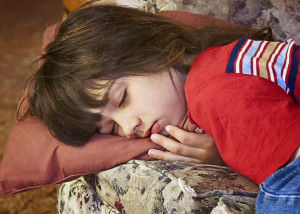 There has been an increase in childhood asthma around the world, and although it may be because doctors are more easily able to detect it, some medical professionals believe it has to do with a common drug you can find at the store.
There has been an increase in childhood asthma around the world, and although it may be because doctors are more easily able to detect it, some medical professionals believe it has to do with a common drug you can find at the store.
Dr. John McBride, a pediatric pulmonologist at Akron Children’s Hospital in Ohio, was familiar with studies that raised concern about brand name Tylenol (acetaminophen) treating colds and fevers in kids with asthma.
When he looked more closely at the studies and research, he saw what might be a connection between childhood asthma and acetaminophen. As the use of Tylenol has increased, so has the number of children being diagnosed with asthma.
In fact, a study published in the European Journal of Public Health, found that children who had even a single dose of Tylenol before their first birthday had a 60% risk of developing asthma.
How does acetaminophen affect asthma?
When someone has asthma, the airways of the lungs are blocked by mucous and therefore become narrower. This narrowing of the airways causes wheezing and shortness of breath.
Acetaminophen may aggravate asthma because it decreases levels of glutathione, a molecule that protects the lungs.
Although Tylenol use is strongly associated with an increase in asthma, it is difficult to say whether acetaminophen causes asthma. But McBride says it may exacerbate asthma in kids who already suffer from it.
While further research is being done on the topic, we recommend parents use alternatives to Tylenol when treating their children for fevers and colds.
According to The Nourishing traditions Book of Baby and Child Care, a fever functions as the body’s therapy, so parents are encouraged to work with it, not merely suppress symptoms.
How to treat a fever naturally:
- Have your child in a peaceful, calm, under-stimulating and restful environment. It is recommended they be kept warm in layers of natural fiber cloths and blankets. This will allow their over-stressed nervous system to rest and heal more quickly.
- Feed them easy-to-digest food. When your child is sick, their metabolism is already working hard, so it’s a good idea to give them easy-to-digest foods. Foods like bone broth, with some cooked vegetables and coconut oil is easy to digest. Taking a few bites of food will also naturally drop a fever within about 20 minutes, according to The Nourishing traditions Book of Baby and Child Care.Although it will not make the fever go away, it will bring it down a few degrees.
- The Wet Sock Treatment. This treatment stimulates the immune system and increases blood circulation. It is an old, natural remedy that can be used as a replacement for fever-reducing medications. You can read step-by-step instructions on how to do this simple treatment here. Another variation of this treatment is called Lemon Socks.
- A lukewarm bath can bring down external temperatures enough to soothe symptoms. (A cold bath is too shocking for your child’s system and will cause them to shiver, thus increasing internal temperature)
- Foods rich in Vitamin A, like Fermented Cod Liver Oil or liver pate, because fevers quickly use up vitamin A.
We highly recommend The Nourishing traditions Book of Baby and Child Care, by Sally Fallon Morell and Dr. Thomas Cowan, as a resource to learn more about natural therapies for your children.
